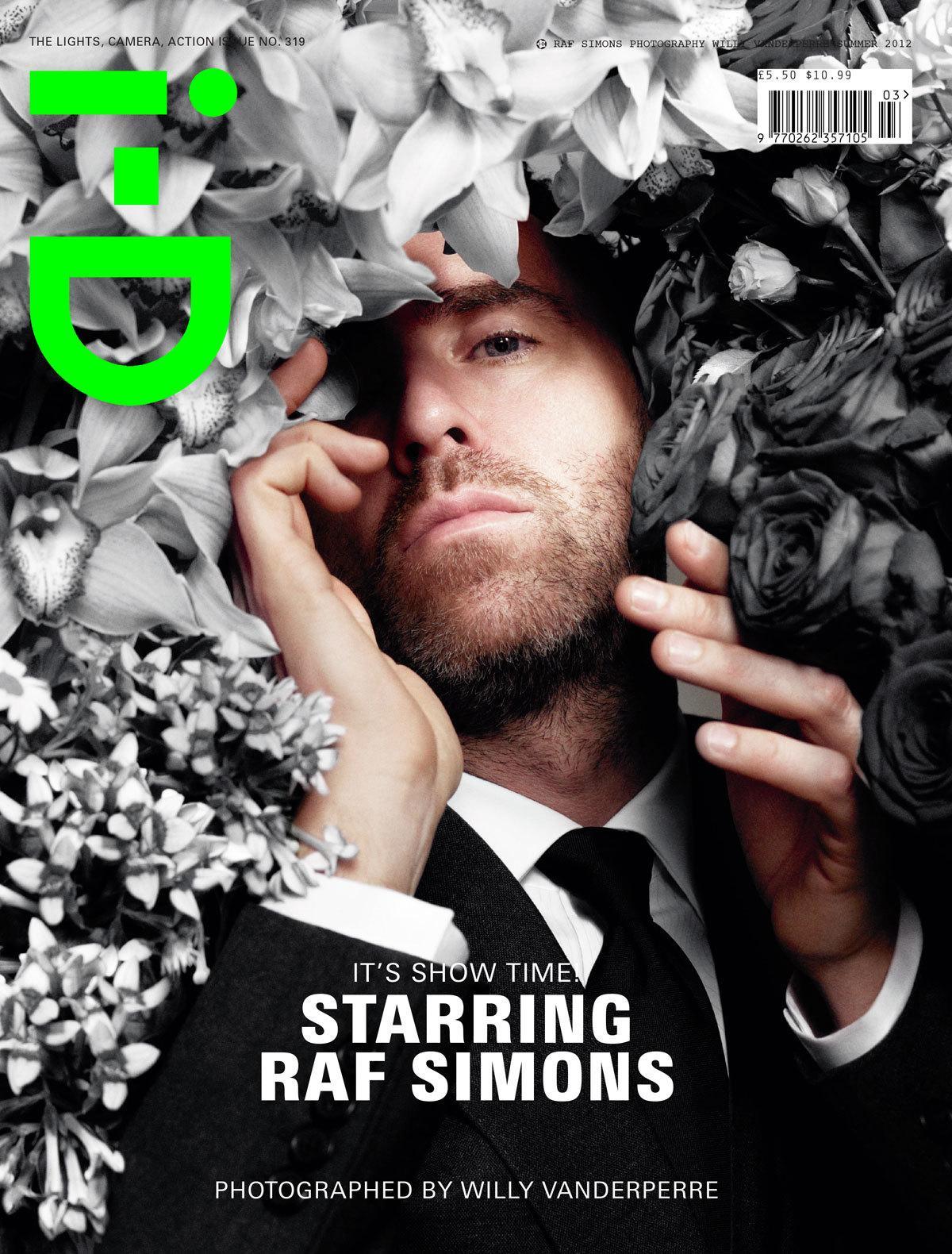This morning in New York, Raf Simons will unveil his first-ever runway offering as the artistic director of Calvin Klein. He’s already redesigned the iconic American brand’s logo — with the help of Factory Records visionary Peter Saville — and revealed his first campaign for the house. Created with his longtime collaborators Willy Vanderperre and Olivier Rizzo, the series features models gazing upon artworks by Andy Warhol, Christopher Wool, and Sterling Ruby, the California-based intermedia artist Simons has collaborated with on and off the runway for years.
To mark today’s occasion, we’ve set out to create an exhaustive guide to all things Raf. As this one reference-rich campaign demonstrates, it’s an almost impossible challenge. Over the past 20 years, Simons has radically re-imagined the possibilities of what menswear can be by looking to the sounds and styles of the streets around him — long before this was common practice in the fashion industry. The glossary of influences shaping his eponymous brand ranges from Manic Street Preachers to Robert Mapplethorpe, Twin Peaks to hardcore techno and teenage summer camps. Because Simons’s vision of modernity is anchored in youth — its emotion, ambition, vulnerability, and charge forward — his universe is ever-expanding.
Simons has not only established himself, as Alexander Fury argued last year, as “the most important men’s wear designer in the world,” but as one of, in Simons’s own words, the chief “activators” of contemporary fashion — alongside Miuccia Prada, Phoebe Philo, and Marc Jacobs. “Fashion doesn’t exist if we don’t exist,” he told GQ just a few weeks ago. Today’s reveal at Calvin Klein is the first page of Simons’s thrilling new chapter. Here, we flip back to his days colliding Picasso and Smashing Pumpkins on the Jil Sander runway, interning for Walter Van Beirendonck, and growing up in a one-record-shop village.
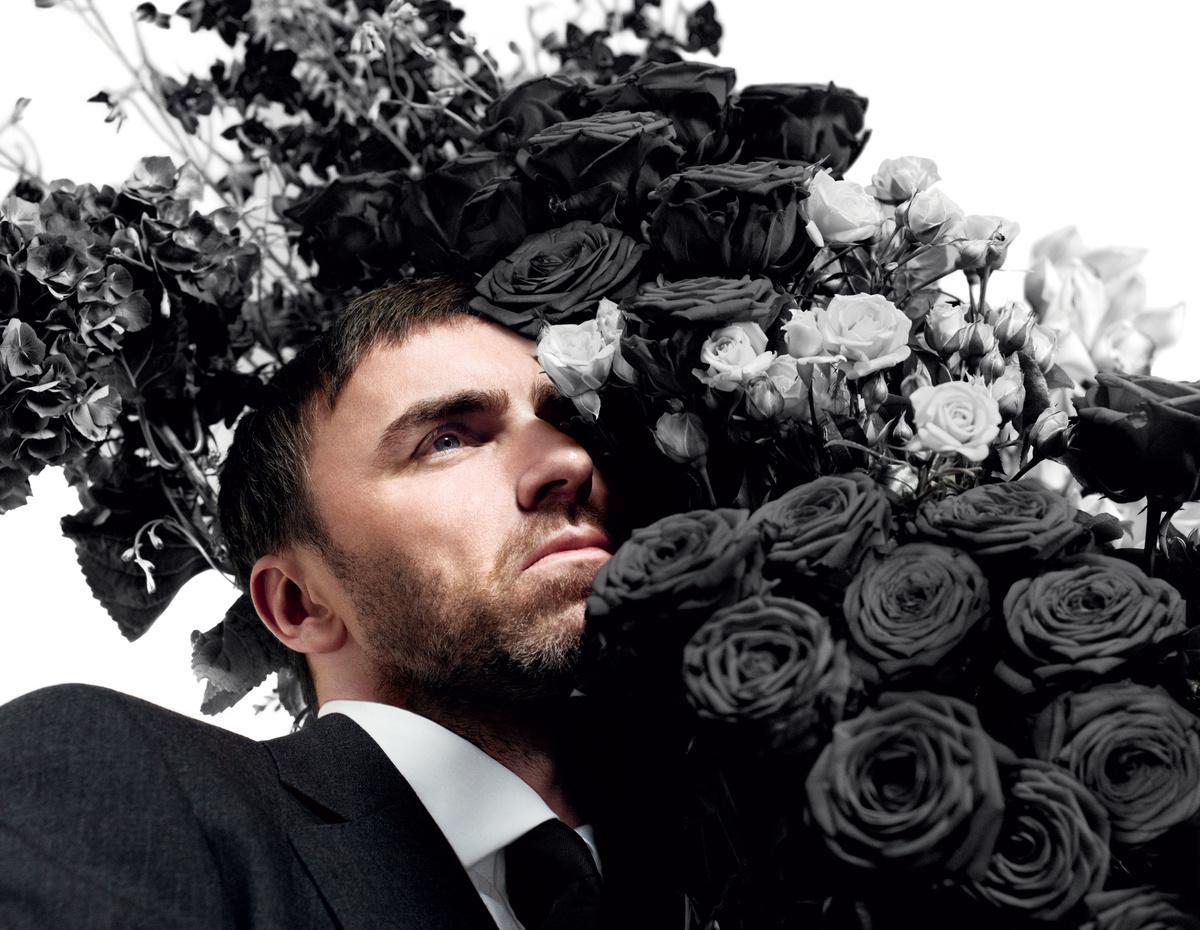
Early life
Simons was born on January 12, 1968. This makes him a Capricorn, and according to his most recent reading (courtesy of Susan Miller, natch) his “first house” is presently full of “personality, vitality, and desire with plenty of opportunity. You have power and weight these days, and VIPs will be listening to all you have to say.” Spot on, as always.
The designer hails from Neerpelt, a small Belgian town, “in the middle of nowhere, a village between cows and sheep,” as he once explained to Vogue. Neerpelt’s population, he guessed, was about 8,000. “There was no cinema, no museum, no gallery, no boutique. It wasn’t there…I had no access to things I clearly felt an attraction to. Art, and also fashion,” he told Fury. Simons’s only outlet was a small record shop, where he began purchasing LPs in the 1970s (more on that later). School wasn’t much help either: “I was growing up in the New Wave period, but that wasn’t allowed in school. I remember moments when they wouldn’t let four people dressed in black stand together on the playground,” he recalled in 2008.
Simons’s father, Jacques, was an army night watchman who enlisted when he was 17. His mother, Alda Beckers, became a house cleaner at 15. “Both parents came from big families, and gatherings with aunts, uncles, and cousins fostered a sense of community and togetherness that Simons, an only child, was drawn to. ‘I’d run to the next farm, where they had ten kids, and I would become the eleventh.’ It wasn’t a life of privilege or wealth, but it was one of absolute love and dignity,” writes Vogue‘s Mark Holgate. His parents’ most enduring advice? “Take it seriously. Do what you what you believe in, but take it seriously.”
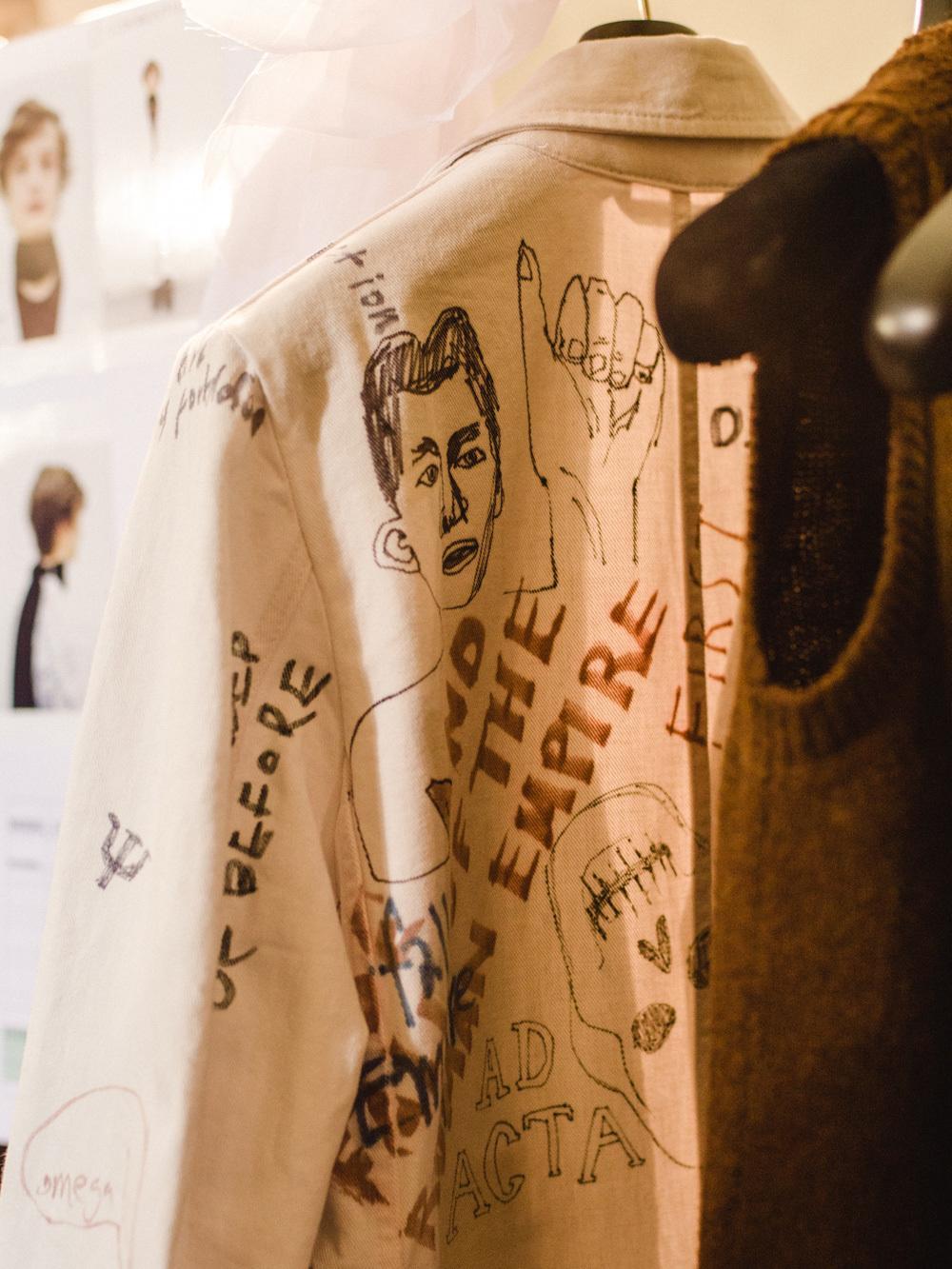
School days
Simons did not study fashion, but earned his degree in Industrial Design and Furniture Design from a college in Genk in 1991. “At that time there was a big boom going on with fashion in Belgium. The more I looked, the more I became interested,” Raf has explained, in reference to the Antwerp Six — a momentously influential group of designers who emerged from the Royal Academy of Art in the 1980s. They include Ann Demeulemeester, Dries Van Noten, and Walter Van Beirendonck. “Before that I never even thought to become a fashion designer or anything like that. I started feeling that work when I was 19 years old, but I didn’t do my first collection until I was 27. I wanted to finish my education in industrial design first.”
Good thing he did. Given the opportunity to choose an internship, he wrote to Van Beirendonck. “I was really scared because I wasn’t coming from a fashion school. So I faked this whole portfolio,” Simons told an interviewer in 2004. For example, he’d make mock covers of The Face and i-D, telling Van Beirendonck these were his school assignments. “Then at the back I had maybe five or six projects from school, but the stupidest things, like an egg holder or something. And he was [pretends to flip quickly through pages] really not interested, and then the egg holder came [stops]. He was fascinated with the industrial design stuff.” It was an ironic start. After guest editing an issue of i-D in 2001 (No. 206, “Heroes”: The Inspiration Issue), Simons did, in fact, create a collage for our cover. During his tenure as the creative director of Dior, he was one of 11 designers who contributed limited edition cover-waps for our 35th Birthday Issue in 2015.
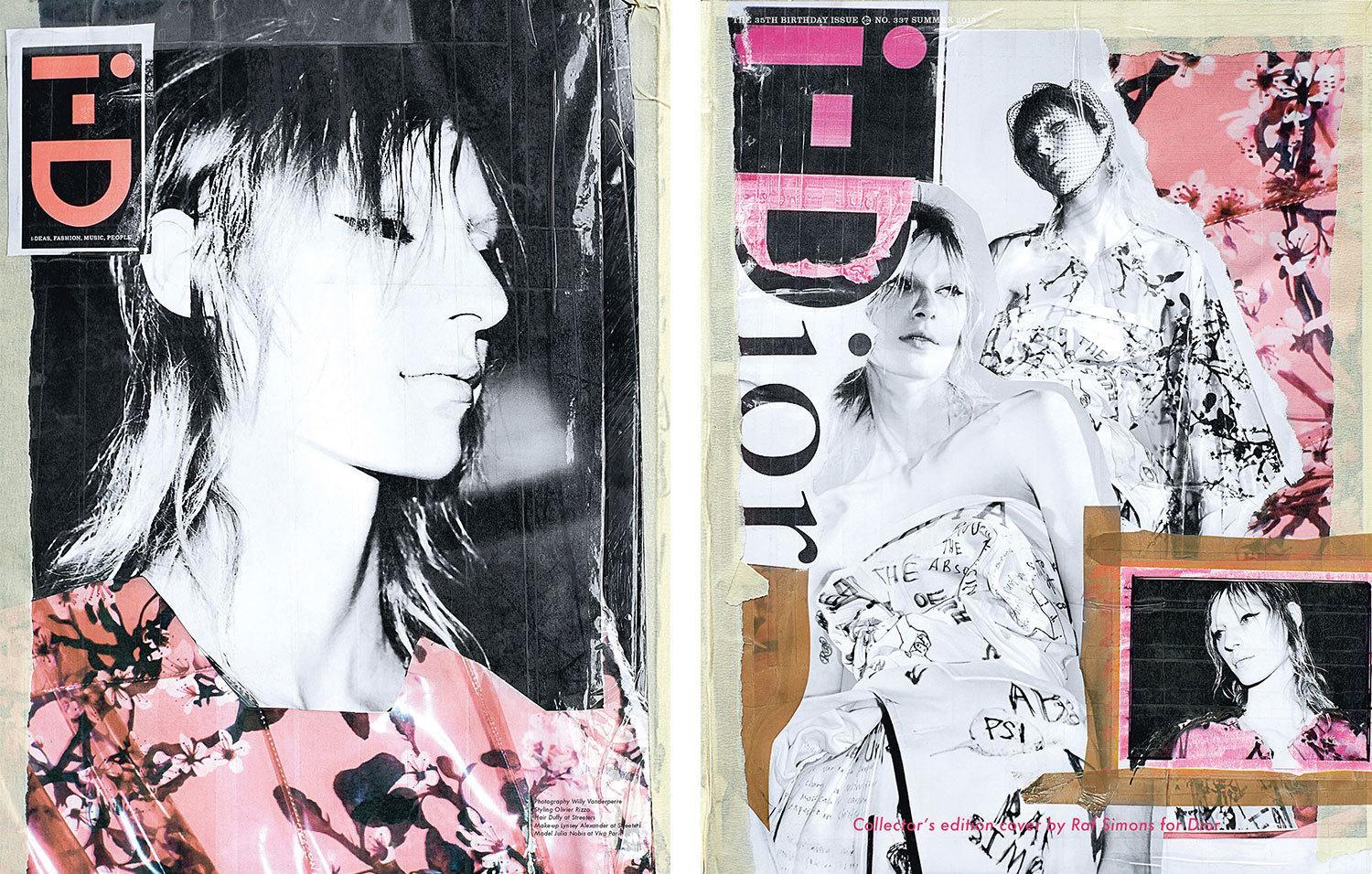
Needless to say, that internship changed his life. Van Beirendonck took a young Simons to his first fashion show, Martin Margiela’s third collection. “Nothing else in fashion has had such a big impact on me,” Simons later recalled. “It was the ‘white’ show, where all the models wore dresses in white and transparent plastic. Margiela had no money at the time, so the Maison ended up going to a black neighborhood in Paris and asking if they could use a children’s playground for the show. The parents said, ‘Yes, you can have the playground, but we want our children to be able to see it.’ So little black children were standing with the audience in the front row. The children started to run over to the models, and they picked them up and held them.” Simons remembered that half the audience cried, including himself. When Fury interviewed him recently, the critic noted that Simons still gets emotional about that show, over 25 years later. “Only at that point did I understand what fashion could be or what it could mean to people,” he said.
Creative collaborators
The internship helped crystallize Simons’s cherished network of creative collaborators, too. Olivier Rizzo, one of today’s most successful stylists, was also interning under Van Beirendonck. Together with photographer Willy Vanderperre, makeup artist Peter Philips, stylist David Vandewal, and Simons’s then girlfriend, designer Veronique Branquinho, the tribe spent most of their time at Antwerp’s late-night café Witzli-Poetzli. “The only thing we talked about was fashion, nothing else. Maybe art. We had two obsessions: Helmut [Lang] and Martin [Margiela]. And we sat there every day for two years, I am not kidding you,” Simons once explained.
Vanderperre remembers first meeting the young dreamer in the early 90s. “[We met] on a terrace in Antwerp, late at night in the shadow of a cathedral. Raf was having a drink there with some friends. We said hi and we were both very intrigued by each other. I wanted to know him better, and luckily he did too. We became really close friends in a short amount of time.” It wasn’t very long before Vanderperre found himself backstage at Simons’s shows, “where Raf gave me the space and the liberty to do as I wanted, which translated into images or sometimes video, that were sometimes in shops, and once got published as a limited edition book. This form of collaboration went on and continues.”
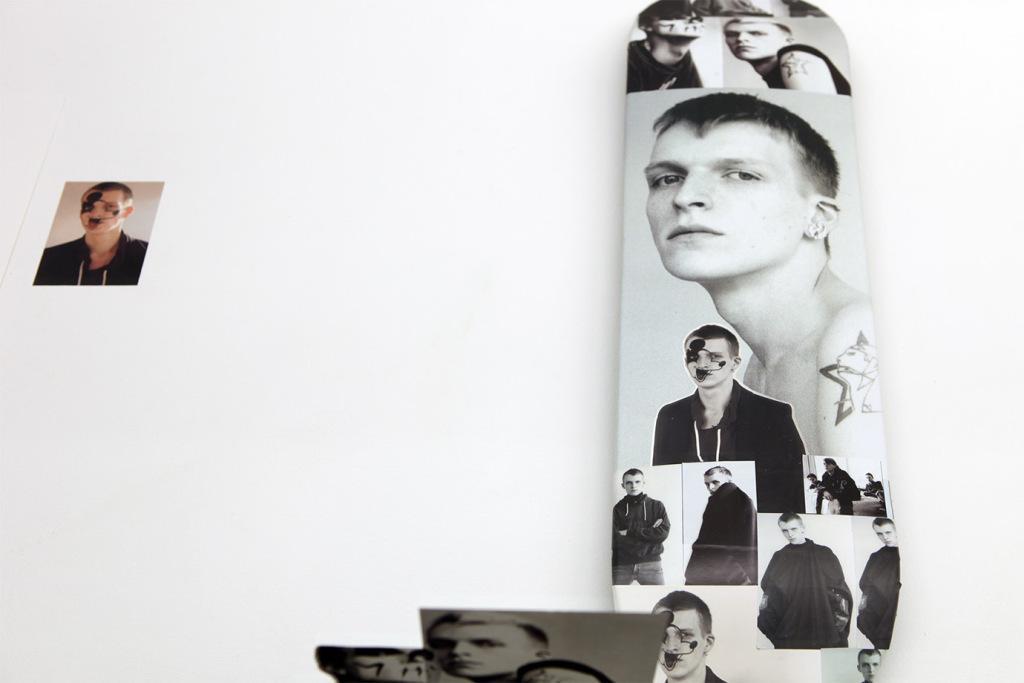
In addition to creating countless campaigns, lookbooks, and art publications, Simons and Vanderperre opened a joint retrospective exhibition of their collaborative work in 2015. Following its Raf Retrospective special issue, 032c gave its Berlin project space to the pair of Belgians, who filled it with collaged skate decks and stickers in the style of decorated school lockers. Vanderperre also put together the music for the exhibition: “The soundtrack plays within the locker, as you move from left to right, it changes. The left side is electronic, the right is sludge; somewhere in the middle the sound collides and becomes abstract noise,” he told i-D. “The electronic music is ‘Mentasm’ by Second Phase (one of my favorite dance tracks!) and the doom sludge rock is from Amenra. They both inspire me a lot.”
Music
Music is of massive importance to Simons, whose collections often draw upon the cult bands beloved by disaffected, isolated youth. One 1998 show featured members of pioneering German electronic band Kraftwerk as models; another featured Saville’s Factory Records designs for New Order and Joy Division on parkas and sweaters. Later soundtracks have incorporated musicians as diverse as Mazzy Star (“Fade into You” at Jil Sander) and Aphex Twin (“Xtal” at Dior). “Tonight Tonight,” a swelling, richly melodic standout from Smashing Pumpkins record Mellon Collie and the Infinite Sadness, not only appeared in the soundtrack to Simons’s fall/winter 97 show, but played as he took his final bow at Jil Sander, sobbing.
“To this day, techno maestro Richie Hawtin, aka Plastikman, is what he plays at home, in the studio, and at his shows,” Mark Holgate has reported. “For the two months I worked on this collection, I listened to Malcolm McLaren’s ‘Madam Butterfly’ and Paris album. I can’t live my life without music, and I can’t see the girl without music,” Simons added. Surprisingly, the first LP Simons ever bought wasn’t techno or post-punk. “You’re going to be shocked,” he confessed to Kanye West in a 2008 Interview Magazine conversation, “[it was] Bob Marley.”
One of Simons’s biggest musical influences? Bowie. The Space Oddity’s early work (think “Life on Mars” and “Heroes”) soundtracked his spring/summer 99 “Kinetic Youth” show outside of the Cité des Sciences et de l’Industrie in Paris. “I’m just thinking back in time, when there were performers that constantly created revolutions. That’s how it started for me, you know? The musicians I was interested in I liked even more because they were such amazing chameleons,” he told West. “You have people such as David Bowie. In a way, I could compare him to you. You are a 21st-century boy, you know? I mean, Bowie goes to Berlin, and 9,000 people go to his concert expecting him to look like Ziggy Stardust, and he looked like the Thin White Duke. If you’re interested in popularity, it’s also very clear in today’s society, that that is the way to make yourself popular, because changing is ultimate freedom.”
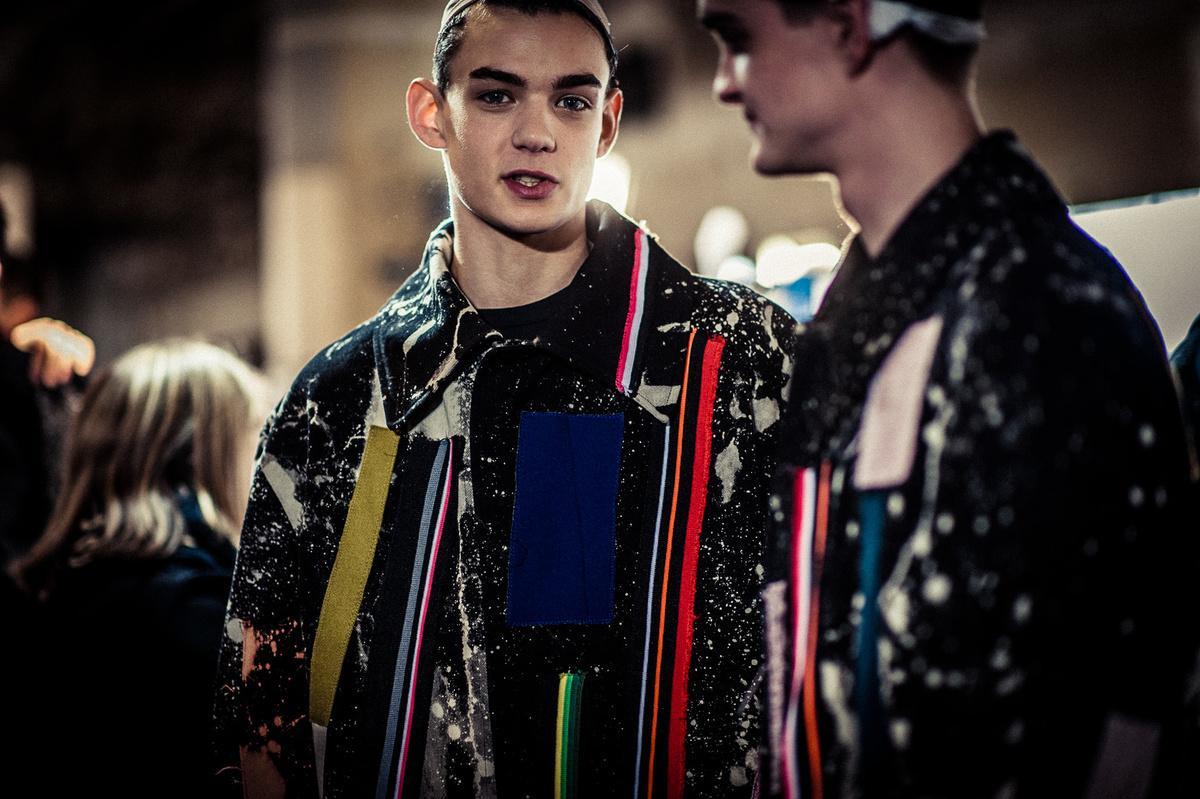
Art
Art is another major obsession that has profoundly shaped Simons’s work since his earliest days designing. In the summer of 1986, when Simons was 18, curator Jan Hoet undertook an ongoing project called Chambres d’Amis, in which works by more than 50 European and American artists were installed in private homes throughout Ghent. Simons followed the project on television, and eventually bought a train ticket to see for himself. ”A house, and these people would have had Joseph Beuys in there. I instantly had a very strong attraction to art. I could relate to it. It wasn’t so distant,” he told Fury.
Since 2000, Simons has acted as a consultant for the Cigrang Freres art collection in Belgium, the same year he began teaching at the University of Applied Arts Vienna. His private collection includes works by Evan Holloway, Mike Kelley, Brian Calvin, Olafur Eliasson, George Condo, Picasso, and, of course, Sterling Ruby. For his thoughts on Vanessa Beecroft performances, (and the controversial Italian artist’s “trucker tattoos”) this interview with Paper Coffin is a rather illuminating read.
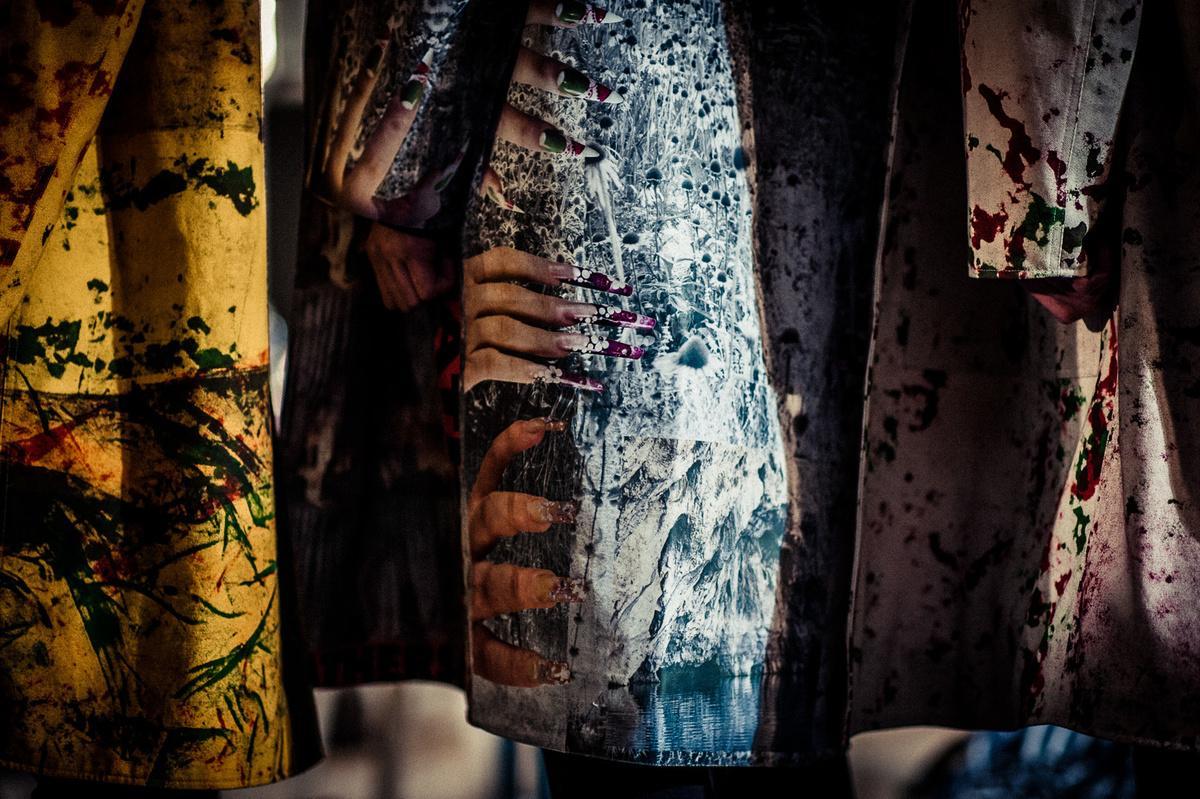
These works in Simons’s collection, and others he encounters during his many trips to galleries, often find their way into his collections. Before his Elvis paintings popped up in the new Calvin Klein campaign, Andy Warhol illustrations appeared in Simons’s fall/winter 13 collection for Dior. “[His] Picasso ceramics, for instance, inspired the penultimate women’s wear collection of his tenure at Jil Sander, where Simons worked for seven years, designing the men’s and women’s lines,” Fury observed. “His last Raf Simons show was set in the Paris outpost of the Gagosian,” The Guardian noted in 2013. “The art references during the Jil Sander years ranged from the pop of Yves Klein blue in his 2008 spring/summer collection to the more obscure influence of ceramicist Pol Chambost in 2009.”
Ruby’s influence is most pronounced, considering he and Simons have known each other personally for more than a decade. Simons first visited Ruby’s Southern California studio in 2005, before Ruby designed interiors for his Tokyo store in 2008. Ruby’s work has found its way onto Raf’s eponymous runways as well as Dior’s. Sarah Nicole Prickett noted their similarities in a joint profile about their expanding collaborative relationship: “Both boys had strict educations (Catholic school for Simons, a ‘very straight foundation school’ for Ruby) and came of age with 80s punk, traveling miles to rip the seams out of their cloistered youths (Simons to the town’s one record shop; Ruby to Washington, D.C. for Bad Brains and Black Flag shows).” Even Page Six found Ruby’s presence at Calvin Klein HQ this fall salacious enough to speculate about how the former pro skater turned multimedia artist will shape Simons’s tenure at the American house.
Evolution
Simons’s obsessions with music and art have always impacted the development of his designs. His first garments were skinny black suits and sleeveless shirts that resembled school uniforms, created with the intention of impressing Linda Loppa, then the Royal Academy of Fine Arts head of fashion. He was trying to gain entrance into the course, but Loppa suggested he start a business instead. Those pieces became the basis for his first collection, in 1995, which was inspired by British post-punk. That youth-fueled musical influence drove much of his work for a decade, according to Jo-Ann Furniss. “The key turning point was fall/winter 04 (Waves), when the obsessive youth culture codes of his past were turned into clothes that were purely about shape and form.”
It’s probably not a coincidence that shortly after, in 2005, Simons took the reigns at Jil Sander. “It is quite wrong to say I’m a minimalist,” he told The Guardian. “When I worked at Jil Sander, the heritage of that brand was actually purist. Jil was such a purist she even threw away her own archive.” Simons saw the brand as “all about space influences and shape restrictions,” but it was his goal to work against that limitation. For fall/winter 08, he put the tailors on the dresses and the dressmakers on the tailoring.
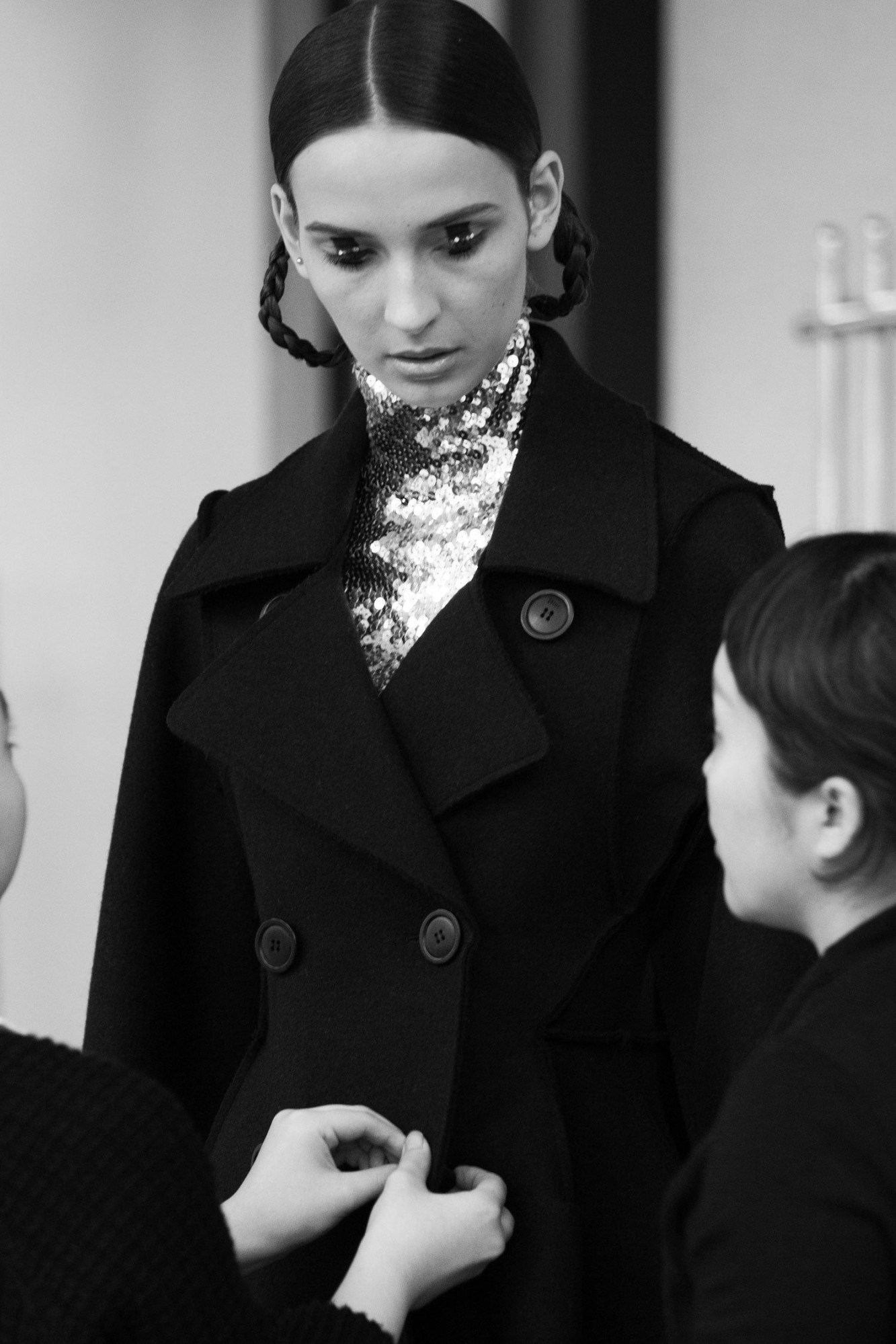
A few years later, we’d be given the chance to step inside Simons’s atelier, not at Jil (who returned to lead her brand after seven years of Simons’s direction) but at Dior. Simons’s first couture collection at the helm of the iconic French maison was captured in Frédéric Tcheng’s Dior and I. Furniss’s observations of shape and form were particularly astute in this case, as the house’s history of super structured silhouettes took on new life in Simons’s hands.
After three and a half years at Dior, Simons announced his departure in October, 2015, detailed in a deeply personal and revealing System Magazine profile by Cathy Horyn, conducted during his final six months at the house. The ever-increasing demands of the rapid fashion cycle, and his exhausting division between Antwerp and Paris were among the chief reasons for this split, so it was a little surprising that Simons’s next appointment was an ocean away — at Calvin Klein in New York. Yet Simons now has complete artistic control over every element of the house, something he notably lacked at Dior. As the GQ interview, and his most recent eponymous collection, make plain, he’s not simply settling into the city, but getting inspired by it.
